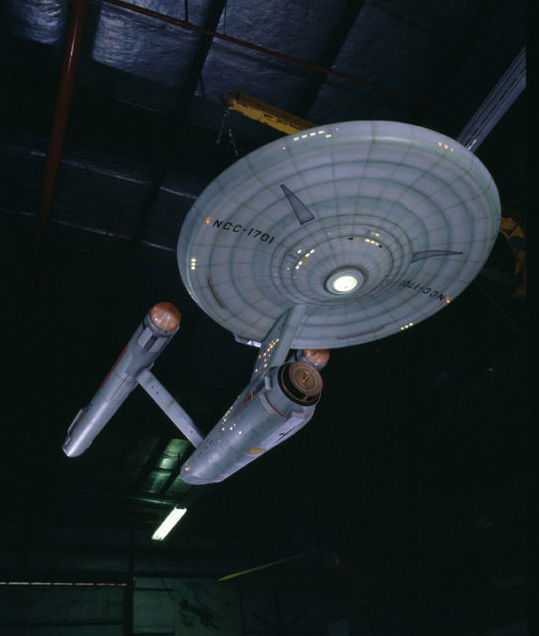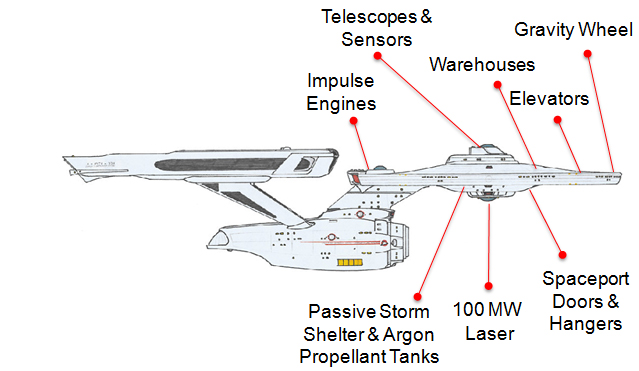Engineer Petitions White House for Real-Life Starship Enterprise

An engineer is petitioning the White House to study the possibility of building a real-life starship Enterprise like the fictional vessel in television's "Star Trek."
The proposal was submitted through the White House's official "We the People" channel, which promises an administration response to any petition that gathers at least 25,000 signatures. Just last month, a petition to build a Death Star like the spherical spaceship in the movie "Star Wars" garnered that critical mass, and is currently awaiting its official response.
The Enterprise proposal comes from an engineer who goes by the name BTE Dan, who detailed plans for constructing a life-size, flyable starship Enterprise on his website last year.
"We have within our technological reach the ability to build the 1st generation of the USS Enterprise," BTE Dan wrote in the petition, viewable here.
As of this writing, the petition had 3,335 signatures, with more than 21,000 to go.
The project, BTE Dan maintains, wouldn't be a vanity exercise, but rather a practical step forward for space exploration. [The Top 10 Star Trek Technologies]
"It ends up that this ship's inspiring form is quite functional," he wrote. "This will be Earth's first gigawatt-class interplanetary spaceship with artificial gravity. The ship can serve as a spaceship, space station, and space port all in one. In total, one thousand crew members & visitors can be on board at once."
Breaking space news, the latest updates on rocket launches, skywatching events and more!
Some experts have questioned the feasibility of certain aspects of BTE Dan's plan — for example, no technology for artificial gravity currently exists, and the largest number of people ever accommodated on any space vehicle until now has been 13 (when the shuttle Discovery docked to the International Space Station in April 2010).
However, scientists are pursuing the dream of interstellar spaceflight — travel to other stars — which would require a significant technological leap from current spacecraft, none of which have yet left the solar system. An organization called 100 Year Starship, initially kicked off with seed money from NASA and the U.S. Defense Advanced Research Projects Agency (DARPA), aims to establish the technologies needed for interstellar flight within 100 years.
Plus, if the Enterprise could be built, BTE Dan argues that its motivational benefits would match its scientific paybacks.
"Few things could collectively inspire people on Earth more than seeing the Enterprise being built in space," he wrote. "And the ship could go on amazing missions, like taking the first humans to Mars while taking along a large load of base-building equipment for constructing the first permanent base there."
For more details about the proposed Enterprise plans, see BTE Dan's site: BuildTheEnterprise.org.
Follow Clara Moskowitz on Twitter @ClaraMoskowitz or SPACE.com @Spacedotcom. We're also on Facebook & Google+.

Clara Moskowitz is a science and space writer who joined the Space.com team in 2008 and served as Assistant Managing Editor from 2011 to 2013. Clara has a bachelor's degree in astronomy and physics from Wesleyan University, and a graduate certificate in science writing from the University of California, Santa Cruz. She covers everything from astronomy to human spaceflight and once aced a NASTAR suborbital spaceflight training program for space missions. Clara is currently Associate Editor of Scientific American. To see her latest project is, follow Clara on Twitter.

